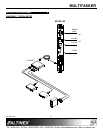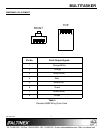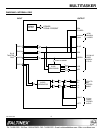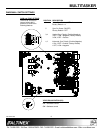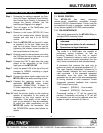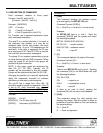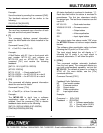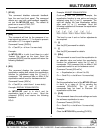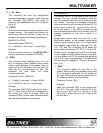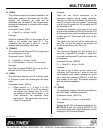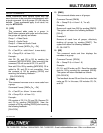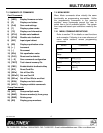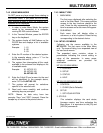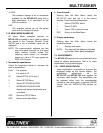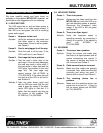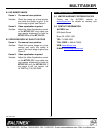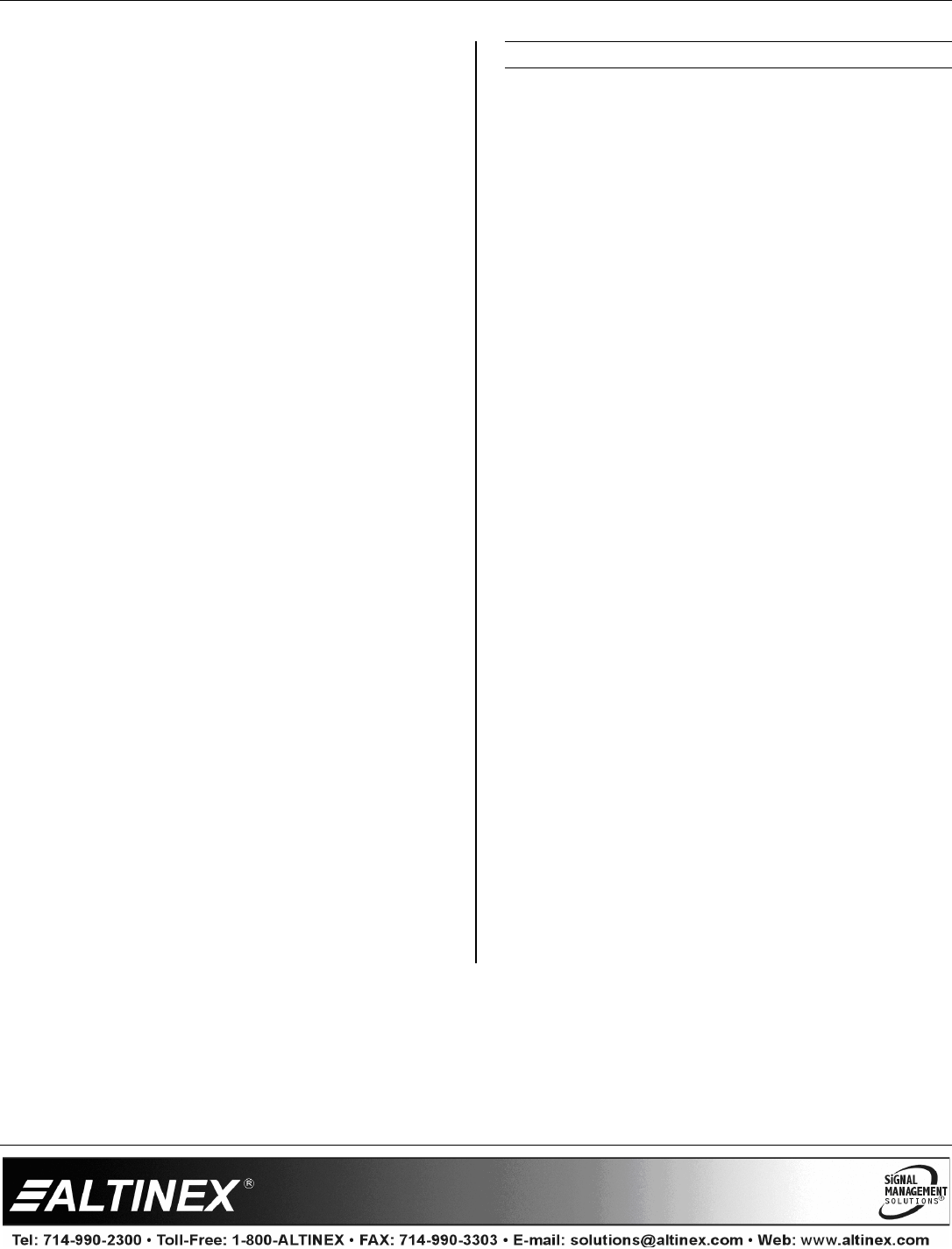
MULTITASKER
400-0374-005
14
14. […S] – Save
This command will save the configuration
command being sent in memory. When sending
the command [EQ=10C4S], after reset or
power-up, the equalization level on C4 will be
set to 10.
15. [TEST]
This command performs a series of tests on the
internal memory. The system will display the
results and report any failures. If there are no
problems, the system will display the following:
MEMORY IS GOOD
Command Format: [TESTCn]
Cn = Card ID (n = slot # from 1 to max slots)
Example:
Test the internal memory of the MT103-123 in
slot 4 by sending the command [TESTC4].
16. [FBD]
This command turns feedback delay on or off
and is necessary when installing some newer
cards in older systems. If the system does not
receive all of the feedback from the card, the
card may be communicating too fast. This
command will slow down the card's
communication rate.
Command Format: [FBDmCn]
m = Delay (0= no delay, 1= delay 100mS)
Cn = Card ID (n = # from 1 to max slots)
Example:
The command [HELPC10] is sent to the card in
slot 10. Some of the HELP file is displayed on
the screen, but most is missing. Send the
command [FBD1] to slow down the rate at which
the card sends feedback to the system.
ID COMMANDS
The default card ID is the same as the card slot
number. The next several commands allow the
user to change the card ID to a value other than the
slot number. Once the ID is changed, moving the
card to another slot will not change the card ID. If a
card in slot 4 is set to ID 1, then moved to slot 10,
its ID will remain 1. The [RSI] command forces
each installed card to take its slot number as its ID
number, regardless of the slot in which it is
installed.
Some cards require more than one slot in the
MultiTasker system. As an example, some matrix
switcher cards require 4 slots. If 5 of these cards
are installed, they would be numbered C4, C8,
C12, C16, and C20. Changing the ID allows the
user to define the cards as C1, C2, C3, C4, and C5.
Another use for changing the card ID is to be able
to use multiple systems without having to set each
unit to a different unit ID. All systems may be left as
unit ID 0 for ease of programming. The cards in the
first unit may be numbered 1-10 and in the second
unit 11-20.
17. [RSI]
This command resets the card IDs in the
system. After sending this command, each card
ID in the system will match the slot number of
the card. If the card is moved to another slot, its
ID number will be the new slot number.
Command Format: [RSI]
Example:
Send the command [RSI] to the system with
Unit ID 0. The card in slot 1 will have ID 1, the
card in slot 2 will have ID 2, and so on. If the
card in slot 1 is then moved to slot 4, the card ID
will then be 4.



